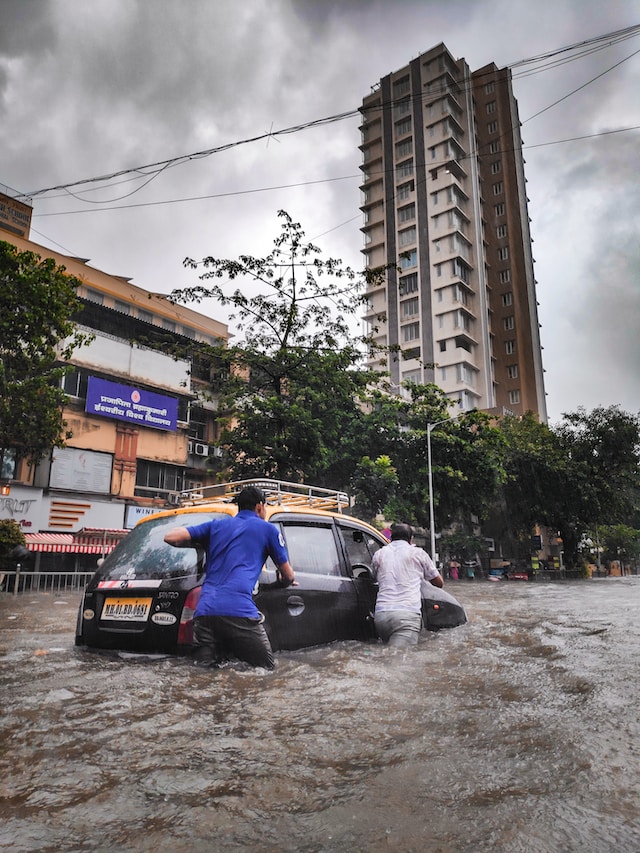Poor suffer most from global disasters

Today’s global news summary brings news affecting the world and the US, and discusses issues as diverse as climate change, AI, and immigration.
- World: Poor nations suffer the most from global disasters
- World: Mass unemployment from AI is not inevitable
- US: Title 42 immigration rule comes to an end
Poor nations suffer the most from global disasters
Environment
A United Nations study reveals that climate change has caused two million deaths over the course of 50 years, with the poorest populations bearing the brunt of the impact, reports Al Jazeera. The study emphasizes the urgent need for global action to address climate change, as it exacerbates existing inequalities and disproportionately affects vulnerable communities. The study underscores the interconnectedness between climate change, poverty, and health, calling for immediate efforts to mitigate climate-related risks and provide support to those most affected.
“The economic impact of a natural disaster does not end with physical damage and loss of life. Natural disasters can also affect victims’ employment, health, and migration decisions, with potentially significant long-term repercussions,” says Tatyana Deryugina, IZA World of Labor author.
Related content
IZA World of Labor articles
Economic effects of natural disasters
Climate change, natural disasters, and migration
Air pollution and worker productivity
Temperature, productivity, and income
Key topics
Environmental regulation and the labor market
Opinions
How will climate change affect what we do?
Videos
IZA World of Labor discussion on the environment and the labor market
IZA World of Labor panel discussion on environment and health
IZA Discussion Papers
Climate Change, Natural Disasters and Migration: An Empirical Analysis in Developing Countries
Environmental Disasters and Migration
Mass unemployment from AI is not inevitable
Labor markets and institutions
While AI has the potential to automate certain tasks and displace jobs, it can also create new opportunities and enhance productivity, reports the Guardian. Proactive policies are required to navigate the evolving landscape of AI and ensure that its benefits are maximized while minimizing any negative consequences. Policymakers should implement strategies that promote job reskilling, invest in education and training programs, ensure fair distribution of benefits, and establish ethical guidelines to govern the use of AI. Erin Lang, lecturer in AI and the future of work at the University of Surrey says “We need our leaders to take this moment seriously, act quickly and, importantly, balance this breakthrough’s potential benefits with the immediate human cost. We can manage the revolutionary influence of AI while assuring a positive future that benefits individuals and society as a whole.”
“How these new technologies affect worker well-being and inequality depends on who owns them,” writes Richard B. Freeman in his IZA World of Labor article.
Related content
IZA World of Labor articles
How is new technology changing job design?
Big Data in economics
Skills or jobs: Which comes first?
Who owns the robots rules the world
Key topics
Digital transformation, big data, and the future of work
Opinions
ChatGPT and IZA World of Labor
A data tax for a digital economy
Videos
Automation and the future of jobs: Stijn Broecke in conversation with Daniel S Hamermesh
IZA Discussion Papers
The Impact of Artificial Intelligence on Labor Markets in Developing Countries: A New Method with an Illustration for Lao PDR and Viet Nam
Modelling Artificial Intelligence in Economics
Title 42 immigration rule comes to an end
Migration and ethnicity
The immigration policy known as Title 42 is coming to an end in the US. Title 42 allowed for the rapid expulsion of many illegal migrants, reports BBC News. With the end of the Covid-19 pandemic, the US is returning to its pre-pandemic Title 8 law that governs asylum and deportations. Tens of thousands of migrants have surged to the US-Mexico border, and the change in policy is expected to create chaos. Title 42, which was implemented in March 2020, allowed US authorities to swiftly remove migrants, including asylum seekers, using the pandemic as justification. The policy resulted in the expulsion of 2.8 million people. The end of Title 42 comes as the Biden administration introduced new rules to deny asylum to almost all migrants who cross the border illegally. The government is also planning to open new migrant processing centers in Colombia and Guatemala and has made agreements with Mexico to accept a certain number of migrants each month from specific countries.
IZA World of Labor authors Cynthia Bansak and Sarah Pearlman tell us that “There are clear benefits from programs that combine access to labor markets with limitations on new migrant inflows. These programs can boost net benefits to the receiving country while reducing security concerns.”
Related content
IZA World of Labor articles
Temporary migration entails benefits, but also costs, for sending and receiving countries
The labor market impact of Covid-19 on immigrants
The impact of legalizing unauthorized immigrants
Key topics
How does migration policy affect the labor market?
Opinions
Who benefits when migrants return to developing countries?
Emigration and the wages of those who stay behind
Videos
IZA World of Labor panel discussion on migration issues
IZA Discussion Papers
Rethinking Border Enforcement, Permanent and Circular Migration